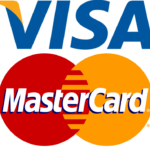Content
- Decentralized Applications – What are dApps?
- Understanding Crypto Bridging: A Comprehensive Guide
- Trade UsingReal-time andOn-chain Data!
- What are dApps? Exploring decentralized applications
- Trade usingreal-time, on-chaindata with Moralis Money Pro!
- What are Decentralized Applications (dApps)?
- What Is a Dapp? Decentralized Apps Explained
Chainyard, a permissioned blockchain-based network, is designed to improve supplier validation, onboarding and life cycle information management. A web browser with almost 9 million active users, Brave is attempting to turn the online advertising model upside down by putting consumers in the driver’s seat. That’s a distributed application – or dApp, as it’s sometimes abbreviated – and there are thousands available for download. It’s important to brainstorm the customer pain points that you’ve identified and to really figure out whether a DApp is likely to be the best solution. Here’s where dapps examples our team of skilled PDMs and blockchain developers will play a key role in helping you to understand whether a DApp, or a traditional app is the best solution.
- This means that hackers can’t launch attacks targeted at individual DApps.
- One of the first issues that users are usually concerned about is technical vulnerabilities because there are no intermediaries.
- Besides that, the communities built around Socios.com integrates the fans regardless of geography.
- As these applications continue to evolve and gain adoption, they are not only disrupting traditional industries but also laying the groundwork for a more decentralized and digital future.
Decentralized Applications – What are dApps?
Dapps can be decentralized because they are controlled by the logic written into the contract, not an individual or a company. https://www.xcritical.com/ Decentralized ticketing platforms intend to solve these problems with trustless smart contracts and NFT-based tickets. Apart from the features mentioned above, Uniswap V2 provides On-chain price feeds that are difficult to manipulate and highly decentralized. Uniswap V2 uses Solidarity language for writing the smart contract. Decentralized Applications (DApps) are digital programs or applications that operate on computer nodes.
Understanding Crypto Bridging: A Comprehensive Guide
One such popular DEX is Uniswap, a decentralized exchange that enables users to trade cryptocurrencies without intermediaries. Decentralization offers Uniswap users more control over their digital assets, as well as lower transaction fees and faster transaction times than centralized exchanges. Although several blockchain networks host DeFi protocols, the first wave was largely built on the Ethereum blockchain.
Trade UsingReal-time andOn-chain Data!
This offer is only valid for new users who have not installed the app yet. There are several key differences between dApps and traditional apps. If you invest in these tokens, be prepared for substantial price fluctuations.
What are dApps? Exploring decentralized applications
The game is one of the world’s first forms of interactive blockchain dApps. One of the primary challenges regulators face with dApps is their decentralized nature. Traditional regulatory considerations are usually based on a specific location; since dApps are not centralized, it’s tougher to regulate activity based on where transactions occur.
Trade usingreal-time, on-chaindata with Moralis Money Pro!
DApps are stored and hosted on computers distributed across a wide network of nodes, called a blockchain network. Distinct from the centralized networks that host applications like Facebook and WhatsApp, dApps cannot be shut down or altered by a single authority. Decentralization is being applied in various fields and industries. For example, cryptocurrencies and decentralized finance (DeFi) aim to create financial systems without relying on traditional banks.
What are Decentralized Applications (dApps)?
If a dApp is open source, there’s no way to hide back doors in the code. Most modern online apps you use every day, like Facebook, Twitter, or Google Docs, all have the same basic structure. There’s a “client” application on your device (or a web app running in your browser) and then there’s a server somewhere.
What Is a Dapp? Decentralized Apps Explained
Decentralized creator platforms empower content creators to have complete ownership over their content and connect directly with their audience. The Vote contract specifically helps developers to design code for DAO voting. This contract ensures votes for protocol upgrades, management, and distribution of funds in a treasury. Some of the most popular DAOs fall under the protocol, investment, service, media, and social divisions. Examples of such DAOs are MakerDAO, Orange DAO, and the Bankless DAO. Developers can also deploy thirdweb’s Split contract to designate multiple wallets for revenue and royalty distribution.
Web2 social media companies sell user data to third parties and rely on advertising campaigns for their revenue. However, decentralized social media networks use a token-based system for data monetization. Moreover, smart contracts offer trustless computation and transaction execution.
The apps also rely on blockchain protocols that hide personal information. Decentralized applications (dApps) are open-source applications that operate on public blockchains and do not belong to a single entity. Most dApps provide financial tools and services using smart contract-based protocols. In the future, we can expect to see a broad range of dApps serving a variety of novel use cases industrywide. Decentralized applications, or dApps, are software programs that run on a blockchain or peer-to-peer (P2P) network of computers instead of on a single computer.
All transactions and activities are recorded on a public ledger, allowing anyone to verify and audit the data. Manu dApps, as you might imagine, relate to cryptocurrencies and finance. If you visit State of the dApps, you’ll see dApp games, cloud storage services, and governance tools. Decentralized apps can also make use of a so-called “sidechain”, which runs in parallel to the main blockchain, but has its own independent operation. Web3 games leverage NFTs to offer players sovereign ownership over their in-game assets and unlock new revenue streams.
Therefore, it’s difficult to tell exactly how many dApps are in existence at a specific point in time. However, the best way to keep track of the number of dApps on a blockchain is to visit dApp tracking sites like dAppRadar. In the case of Ethereum, these transactions are paid for in the form of “gas” fees, which can vary depending on the current demand for transaction verification. In most cases, you’d buy Ethereum and then use it to pay for the transactions on the blockchain the dApp needs to perform so that it can do its job. The answer involves concerns about the control big tech companies have over our data and how vulnerable centralized systems are.
This contract automates revenue allocation to specific wallet addresses (like team members and artists) from secondary NFT sales. For example, NFT marketplaces enable artists and content creators to tokenize their content and sell them as NFTs. On the marketplace, sellers list NFTs for direct sale or auction, and buyers purchase or place their offers/bids.
DApps (Decentralized Applications) are applications that run on a peer-to-peer network rather than a centralized server. They utilize blockchain technology to ensure data is distributed across numerous nodes, providing a more secure and transparent framework. This decentralized nature eliminates the need for intermediaries, offering users greater control and privacy. Decentralized social media platforms store user data on decentralized networks rather than company-owned centralized servers.
In the first quarter of 2022 alone, $1.2 billion was stolen in hacks and exploits, according to DappRadar. In August 2021, Poly Network was exploited for $611 million; March 2022 saw play-to-earn game Axie Infinity’s Ronin bridge hacked for $552 million. First, you will need to choose a platform — the Ethereum network, EOS, and Tron are the most popular ones. Next, define your use case and think about the kind of problem your app will solve.




